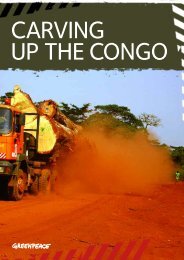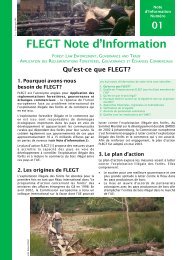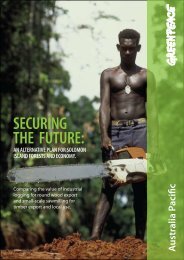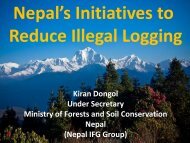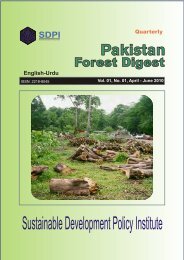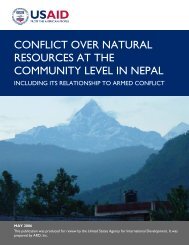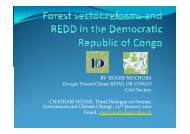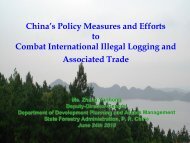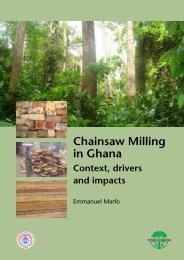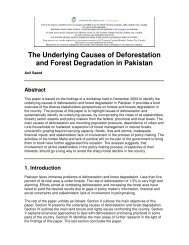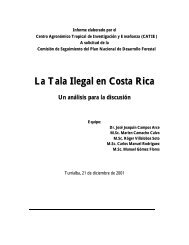download document - Rights and Resources Initiative
download document - Rights and Resources Initiative
download document - Rights and Resources Initiative
- No tags were found...
You also want an ePaper? Increase the reach of your titles
YUMPU automatically turns print PDFs into web optimized ePapers that Google loves.
Historical <strong>and</strong> contemporary l<strong>and</strong> laws <strong>and</strong> their impact on indigenous peoples’ l<strong>and</strong> rights in Ug<strong>and</strong>a:The case of the Batwawas to be applied retrospectively to those – like the Batwa – who were already resident in theparks before it came into force.One progressive piece of legislation in relation to Batwa l<strong>and</strong> rights at the time is the 1959Game (Preservation <strong>and</strong> Control) Act 79 . Section 41 provided that:Nothing in this subsection shall render unlawful…(b) in the case of an area declared to be a game reserve under the Provisions of section 38of the Act, the residence therein of any person, his wife <strong>and</strong> children if such personwas actually resident therein on the 1 st July 1959 or(c) in the case of an area declared to be a game reserve under section 39 of this Act, theresidence therein of any person , his wife <strong>and</strong> children, if such person was actuallyresident therein on the date of such declaration.While the Batwa were among those recognised as lawful residents, having resided there priorto 1 July 1959, the law did not recognise the Batwa’s different l<strong>and</strong> use. Protection of residencerights is not in any way equivalent to reinstatement of customary ownership rights. The Batwaare a hunter–gatherer community <strong>and</strong> it is not clear from the law whether the mention ofcultivation <strong>and</strong> depasture without hunting <strong>and</strong> gathering was by design or default.The same rights are recognised in the more recent Ug<strong>and</strong>a Wildlife Act 2000, 80 whichrecognises that individuals who have property rights in l<strong>and</strong> in conservation areas may carryout activities for the sustainable management <strong>and</strong> utilisation of wildlife, as long as thoseactivities do not adversely affect wildlife. It provides for the management <strong>and</strong> control of l<strong>and</strong>use there by the persons <strong>and</strong> communities living in the area. That is to say, it presumes that itis possible for wildlife <strong>and</strong> those persons <strong>and</strong> communities to co-exist, <strong>and</strong> for wildlife to beprotected. It provides for the historic rights of individuals in conservation areas, <strong>and</strong> providesthat the Authority may establish guidelines for communities neighbouring conservation areasto access resources crucial to the survival of those communities.Suffice it to say that the above provisions affirm the Batwa’s rights to live in the forests orNational Parks. They simply regulate their stay in the forests <strong>and</strong> certainly do not warrant theireviction. The Authority, however, has met none of these obligations. Although an assessmentwas carried out in 1991 to establish the impact of gazetting Bwindi forests <strong>and</strong> the MgahingaGorilla National Park, this was ‘forced’ upon the state by the World Bank as a condition of itsfunding the intervention programmes of the Government of Ug<strong>and</strong>a in the two national parks.The assessment was in fact carried out four years after gazetting, when the Batwa had alreadybeen evicted.The Batwa were at no time engaged in meaningful discussion in the process leading to thegazetting of the forests as protected areas. The Batwa had no knowledge that the processwas even taking place, in contravention of Article 2 of the African Convention on the79 Ibid., Cap. 226.80 Ibid., Cap. 200.Nakayi 15January 2009




